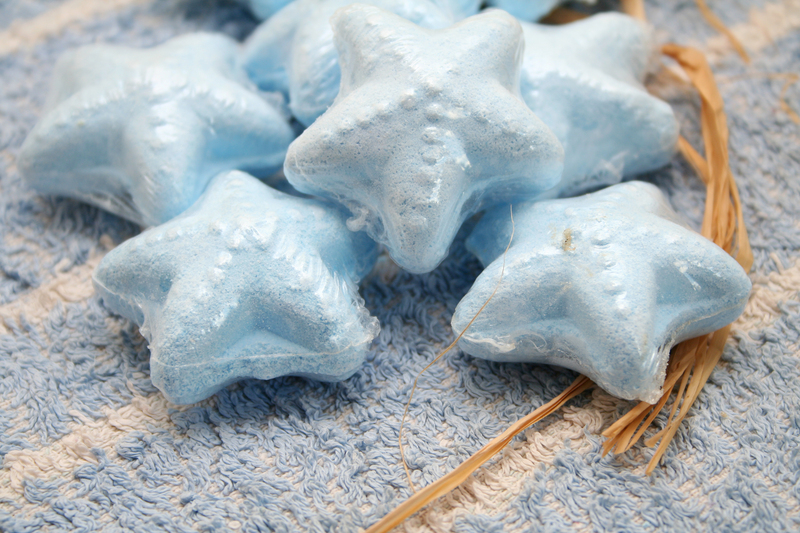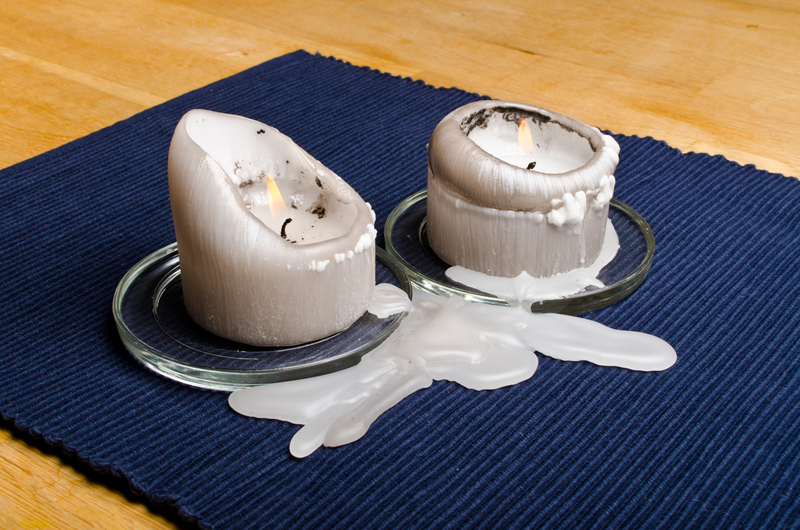Revitalize Your Space by Eliminating Damp Odors: The Ultimate Guide
Does your home or office carry a persistent musty smell? Damp odors can creep into our spaces, lingering in rooms, hallways, basements, and even closets. These unwelcome scents don't just compromise ambience; they often signal underlying issues, such as excess moisture or mold, that can impact your health, property value, and overall wellbeing.
In this comprehensive guide, you'll discover practical ways to revitalize your space by eliminating damp odors. Learn what causes these smells, the best methods to banish them, and how to maintain a fresh, inviting environment for good.
Understanding the Source of Damp Odors
Before you can effectively remove damp smells from your home, it's essential tounderstand their origins. Damp, musty odors are primarily caused by:
- Excess moisture or high humidity within walls, floors, or the air.
- Mold and mildew growth in hidden or damp areas.
- Poor ventilation, which leads to stagnant, stale air.
- Water leaks--whether from the roof, plumbing, or foundation.
- Wet fabrics, upholstery, or carpets left unattended.
These factors combine to create the familiar and unpleasant "damp" odor. Left unchecked, they can contribute to long-term health hazards (respiratory problems, allergies), and costly property damage.
Why It's Important to Eliminate Musty Odors
Beyond the obvious discomfort, musty smells can have real consequences:
- Health Risks: Mold spores and bacteria thrive in damp environments, aggravating asthma and allergies or causing respiratory issues.
- Decreased Property Value: Persistent odors can make your property less attractive to potential buyers or tenants.
- Quality of Life: Nobody wants to relax in a space that feels unclean or smells unpleasant.
- Potential Structural Damage: Moisture can weaken building materials, promote mold growth, and lead to costly repairs.
Taking action now to eradicate damp odors is crucial for your home's atmosphere, your health, and your investment. Ready to discover the most effective techniques? Let's dive in.

Step 1: Locate and Address Moisture Sources
The first step to eliminate damp odors is identifying and tackling the source of moisture. Here's what you should check:
- Inspect for Leaks: Examine plumbing, roofing, and basement walls for signs of water ingress. Water stains, condensation, and peeling paint are warning signs.
- Check Humidity Levels: Use a hygrometer to monitor humidity, keeping it below 60%. High humidity fosters musty smells and mold.
- Look for Hidden Mold: Inspect closets, behind furniture, under carpets, and inside air vents--the prime spots for subtle mold colonies.
- Examine Fabrics & Materials: Upholstery, carpets, and cardboard are notorious for trapping and spreading dampness.
If you find a leak or evidence of water damage, address it immediately. Repair plumbing, seal cracks, and replace damaged building materials as needed. You'll set the foundation for a fresher, healthier environment.
Step 2: Eliminate Damp Odors at Their Source
Deep Cleaning for a Fresh Start
Thorough cleaning is essential to eliminate lingering damp smells and the organic materials (like mold) that cause them. Here's a general checklist:
- Wash textiles: Launder curtains, cushion covers, bed linens, and machine-washable rugs in hot water with a cup of vinegar.
- Clean carpets and upholstery: Use a steam cleaner or professional service for deep cleaning. Sprinkle baking soda on carpets before vacuuming to absorb odors.
- Wipe all surfaces: Clean walls, floors, and baseboards with a mixture of water and white vinegar (nature's deodorizer).
- Treat mold & mildew: For minor growth, scrub with a solution of vinegar or hydrogen peroxide. For significant mold infestations, consult a professional remediation service.
- Empty and air out closets: Remove damp items, clean shelves, and dry in sunlight if possible.
Natural Deodorizers to the Rescue
Sometimes, persistent odors linger even after cleaning. Harness the power of natural odor absorbers:
- Baking Soda: Place open boxes or bowls in closets, cabinets, and rooms to continuously absorb musty smells.
- Charcoal Briquettes: Activated charcoal is particularly effective--just set a few bags in discreet corners.
- White Vinegar: Fill a shallow bowl with vinegar and leave it overnight in affected areas. It will neutralize odors (don't worry--the vinegar smell fades as it evaporates).
- Coffee Grounds: Place dried, unused grounds in breathable containers for a subtle, fresh scent.
Rotate or replace these items regularly to maintain ongoing freshness and continue combating new damp odors.
Step 3: Improve Air Circulation and Ventilation
Proper air flow is crucial for keeping your space dry and smelling clean. Mold, mildew, and musty scents thrive in stagnant, unventilated environments. Here's how to improve air quality:
- Open Windows and Doors: Even brief periods of cross-ventilation each day can exchange stale air for fresh.
- Install Exhaust Fans: Use in kitchens, bathrooms, and laundry areas to remove steam and humidity instantly.
- Use Ceiling or Stand Fans: Circulate air in living and sleeping areas, especially if windows can't be opened.
- Place Dehumidifiers: These devices extract moisture from the air. In humid climates, a portable or whole-house dehumidifier is a game changer.
- Move Furniture Away from Walls: This helps air circulate behind and beneath pieces where dampness tends to accumulate.
Tip: Aim to keep relative humidity between 30% and 50% for a fresh, odor-free atmosphere.
Step 4: Prevent Future Damp Smells
Once you've succeeded in eliminating musty odors, your next priority is long-term prevention. Follow these best practices to ensure your space remains inviting and vibrant:
Maintain Optimal Humidity
- Check and fix leaks quickly.
- Use dehumidifiers and air conditioning during humid seasons.
- Keep gutters and downspouts clear to prevent water pooling near foundations.
Regular Cleaning Routine
- Vacuum carpets and dust surfaces weekly.
- Launder bedding, curtains, and slipcovers regularly.
- Inspect storage areas for dampness and mold.
Enhance Ventilation
- Install vent fans in all moisture-prone areas.
- Leave closet doors slightly open to allow air flow.
- Air out damp fabrics and items outdoors when possible.
Use Odor Absorbers
- Refresh baking soda or charcoal bags monthly.
- Add houseplants like English ivy or peace lilies--they naturally help filter air.
Consistent upkeep helps guard against the return of dampness and unpleasant odors, ensuring your home stays vibrant and welcoming.
Advanced Solutions for Persistent Problems
If you've tried the above strategies and musty odors persist, you may be dealing with deeper issues, such as:
- Severe mold infestation, often within walls, ceilings, or floors.
- Chronic foundation or plumbing leaks that constantly reintroduce moisture.
- Poor construction or inadequate vapor barriers--especially in basements or old properties.
When to Call Professionals
- If you see widespread or recurring mold (especially black mold), consult a mold remediation specialist.
- If there is structural water damage (warped floors, rotten wood, crumbling drywall), hire a contractor for repairs.
- If you suspect HVAC contamination (smells from vents, persistent dust), a professional cleaning service is recommended.
Remember: Safety first. Mold and water damage can be hazardous to your health and the integrity of your home. Don't hesitate to seek qualified help.
Bonus: Quick Fixes for Immediate Relief
Need to freshen up a room quickly before guests arrive or during a busy week? Try these simple tricks:
- Boil a pot of water with lemon slices and a dash of cloves or cinnamon to infuse the air with a clean scent.
- Spritz fabric-safe, natural linen sprays over upholstery, curtains, and carpets.
- Run a portable air purifier for instant air refreshment.
- Keep indoor plants to naturally absorb pollutants and freshen air.
- Place bowls of uncooked rice to absorb humidity as a temporary measure.
While these solutions offer immediate improvement, they work best alongside the deeper remedies and prevention methods outlined above.

Frequently Asked Questions About Eliminating Damp Odors
What is the fastest way to get rid of a musty smell in my home?
Find and remove the source of moisture, clean thoroughly, and ventilate the area. Use a dehumidifier and set out bowls of baking soda or activated charcoal for rapid odor control.
Is a musty smell always a sign of mold?
Not always, but it's usually an indicator of excess moisture, which enables mold and mildew to thrive. Inspect for visible mold and address humidity quickly.
Will an air purifier eliminate damp odors?
An air purifier with a HEPA and activated carbon filter can reduce musty smells and airborne particles. However, it's most effective when combined with moisture elimination and thorough cleaning.
How can I prevent musty smells in storage spaces?
Keep storage areas dry, ventilated, and use odor absorbers like charcoal or baking soda. Avoid storing items against exterior walls, and regularly inspect for leaks or dampness.
Are commercial odor removers effective?
Some products mask or temporarily neutralize odors. For long-term results, it's essential to remove the source of moisture and regularly clean problem areas.
Conclusion: Enjoy Clean, Fresh Spaces
Unpleasant damp odors don't have to be a permanent fixture in your home or office. By addressing moisture problems, cleaning thoroughly, maintaining optimal humidity, and enhancing ventilation, you can revitalize your space and eliminate musty aromas for good.
Remember: Prevention is key. Apply these strategies consistently and you'll enjoy clean, healthful, and welcoming rooms every day. Start taking steps now to transform your environment--one breath of fresh air at a time!
Feel inspired? Tackle those damp odors today and experience a revitalized space that truly feels like home.


